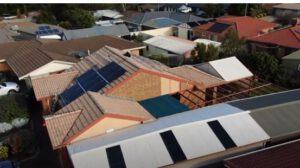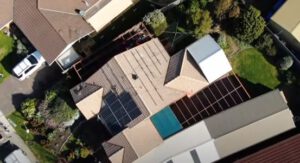Is it Possible to Install Solar Panels on My Australian Roof?
 In the face of growing global climate change concerns, renewable energy sources have become more vital than ever before. Among these, solar power has been identified as one of the most sustainable and effective solutions. This is particularly true for Australia, a continent blessed with abundant sunlight year-round. As a homeowner, you might be considering the feasibility of installing solar panels on your roof. The good news is, it is not only possible, but also highly beneficial. This article will detail the entire process, considerations, benefits, and potential challenges of installing solar panels on your Australian roof.
In the face of growing global climate change concerns, renewable energy sources have become more vital than ever before. Among these, solar power has been identified as one of the most sustainable and effective solutions. This is particularly true for Australia, a continent blessed with abundant sunlight year-round. As a homeowner, you might be considering the feasibility of installing solar panels on your roof. The good news is, it is not only possible, but also highly beneficial. This article will detail the entire process, considerations, benefits, and potential challenges of installing solar panels on your Australian roof.
The Australian Solar Opportunity
Australia boasts one of the world’s highest solar radiations per square metre, making it an ideal location for solar power generation. Every year, Australia gets about 58 million PJ of direct solar radiation, nearly 10,000 times its total energy consumption.
With the Australian government’s supportive policies and incentives, solar power installation is becoming more accessible. By 2022, over 2.68 million rooftop solar power systems had been installed in Australia, showing a keen interest in harnessing solar energy amongst the population.
Initial Considerations
Before you proceed with the installation, you should consider several factors.
Roof Size and Orientation
The size and orientation of your roof can determine the efficiency of your solar panels. Generally, north-facing roofs are best suited for solar installations in Australia due to their maximum exposure to sunlight. A roof size of 15-25 square metres is usually sufficient for a standard household system.
Roof Condition
If your roof is old or damaged, it might not be able to support solar panels. Therefore, you might need to consider roof repairs or replacement before installing a solar panel system.
Shade and Sunlight
The amount of shade your roof gets can affect the efficiency of your solar panels. An area with minimum shade throughout the day is the most suitable for solar panel installation.
Installation Process
Evaluation and Planning
The first step is a comprehensive site evaluation by a professional solar installation company. They will assess your roof condition, orientation, and shading to devise the most efficient setup for your home.
Panel Selection
There are three types of solar panels you can choose from – monocrystalline, polycrystalline, and thin-film. Each has its own advantages and drawbacks regarding efficiency, cost, and aesthetic. The best one for you would depend on your budget, roof size, and energy requirements.
Installation
The actual installation process usually takes a few days. The company will first install the mounting structure for the panels, followed by the panels themselves. Then, they will set up the inverter and wiring system that connects your panels to your home’s electricity supply.
Inspection and Connection
After the installation, an inspector will need to approve the system before it can be connected to the grid. Once approved, your solar panels are ready to produce electricity.
Benefits of Installing Solar Panels
Economic Benefits
 Solar power can significantly reduce your electricity bills. With the feed-in tariff scheme, you can even earn money by selling excess power back to the grid.
Solar power can significantly reduce your electricity bills. With the feed-in tariff scheme, you can even earn money by selling excess power back to the grid.
Environmental Benefits
By shifting to solar energy, you can significantly reduce your carbon footprint. Solar power is clean and renewable, helping to combat climate change.
Energy Independence
With solar panels, you become less dependent on grid electricity, giving you greater energy security and independence.
Challenges and Solutions
While there are many advantages to installing solar panels, it’s important to acknowledge potential challenges.
High Initial Costs
While the cost of solar installations has significantly decreased in recent years, the upfront cost can still be substantial. However, government rebates, incentives, and the long-term savings on electricity bills can make it a worthwhile investment.
Intermittency Issues
Solar panels only generate electricity when the sun is shining. However, with the advent of affordable solar battery storage systems, you can store excess power for use during the night or cloudy days.
Aesthetics
Some people may find solar panels unattractive. However, modern solar panels come in sleek designs and colours that can blend seamlessly with your roof aesthetics.
Conclusion
The installation of solar panels on your Australian roof is not only possible but also a sound investment for your wallet and the environment. With the right considerations, a suitable installation, and the willingness to embrace renewable energy, you can transform your home into a beacon of sustainability. It is a step forward in the collective effort to secure a greener future for generations to come.